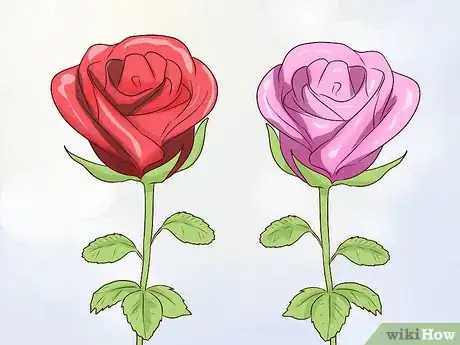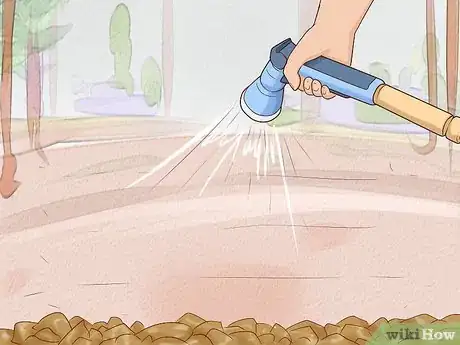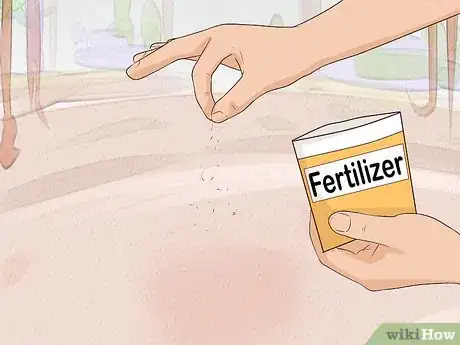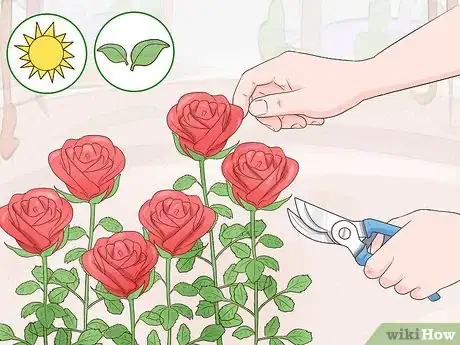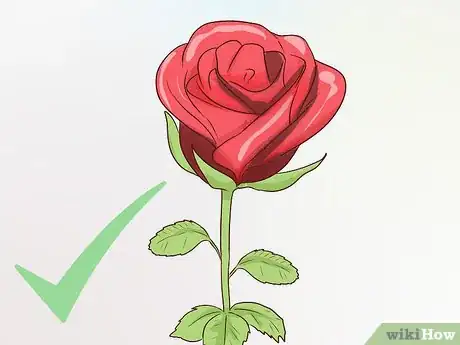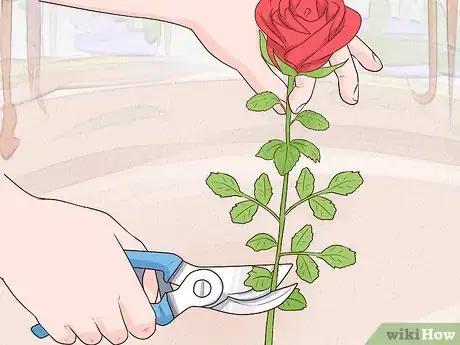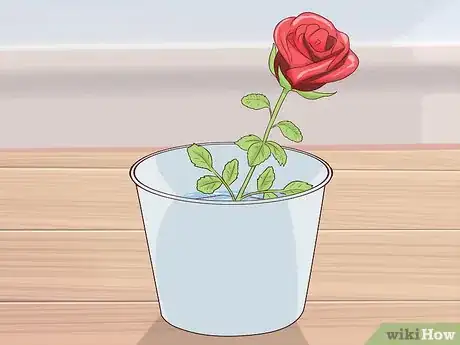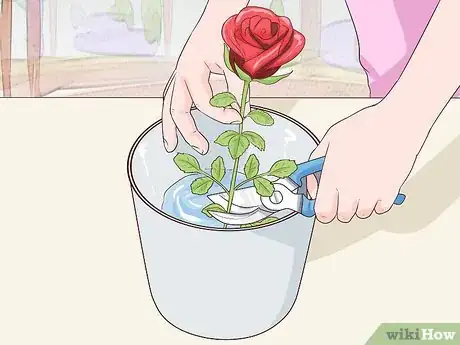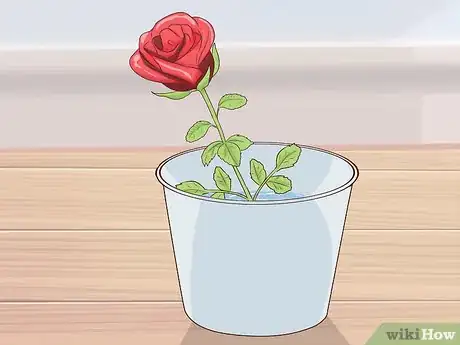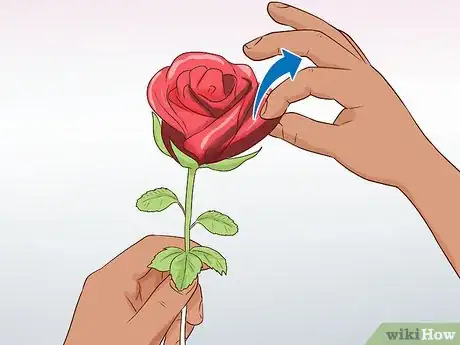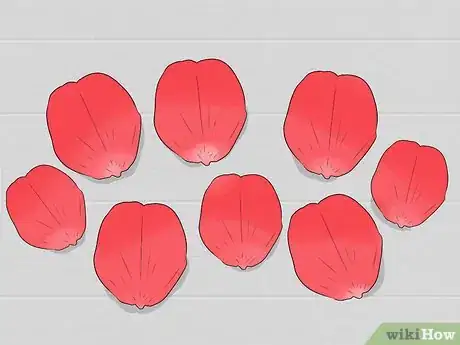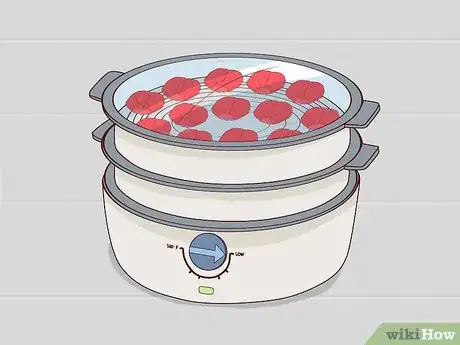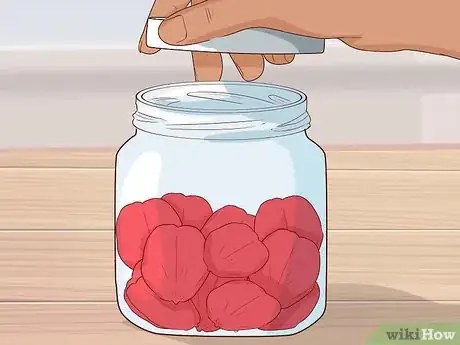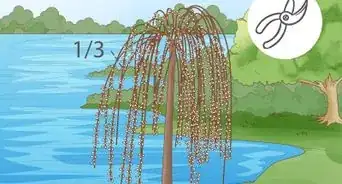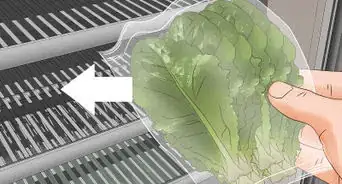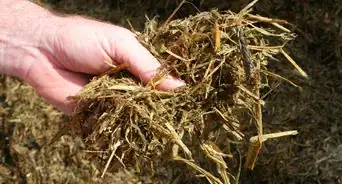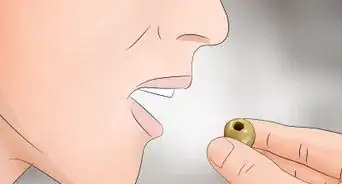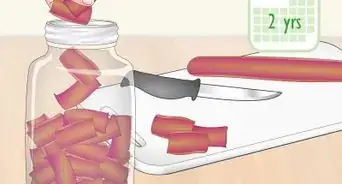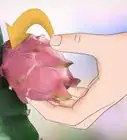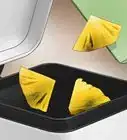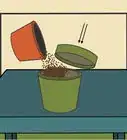X
This article was co-authored by Lauren Kurtz. Lauren Kurtz is a Naturalist and Horticultural Specialist. Lauren has worked for Aurora, Colorado managing the Water-Wise Garden at Aurora Municipal Center for the Water Conservation Department. She earned a BA in Environmental and Sustainability Studies from Western Michigan University in 2014.
This article has been viewed 24,823 times.
The petals from roses can be harvested and then used in foods like jams, salads, and syrups. To harvest roses, find areas where healthy roses grow and harvest them in the early spring or summer. Cut the roses carefully and then dehydrate the petals to use them later.
Steps
Part 1
Part 1 of 3:
Finding or Growing Roses
-
1Find areas where roses grow. If you don't want to plant roses, find them outdoors. Roses tend to grow in low to middle elevations. Roses are usually found in clusters in open, sunny areas. Roses are easy to find as they tend to form dense thickets in the right areas. Explore wooded areas around you to locate roses to harvest.[1]
-
2Identify roses correctly. Make sure the plants you find are roses before harvesting, as some wild flowers are not safe to eat. Wild roses are red or pink and have five petals each. Red roses tend to have a pear-like shape. Roses usually have one flower per branch and tend to have thorns or prickly textures on the stem.[2]
- If you are not sure if a plant is a rose, do not harvest or consume it.
Advertisement -
3Plant your roses. You can also plant roses to harvest. Purchase rose seeds online or at a local greenhouse. They should be planted in an area where the soil's pH level is between 6.5 and 7 and where they can have access to direct sunlight six to eight hours a day.[3]
- You can buy a pH testing kit at a greenhouse to check your soil outdoors. If growing roses indoors, you should be able to buy soil at a greenhouse that is the proper pH for your roses.
- If growing roses inside, place them near a window or on your balcony to make sure they get enough sunlight.
-
4Water your roses adequately. Soak the area around the roots completely at least once a week if you're not getting any rain or are growing your roses indoors. Place two to four inches of shredded leaves or grass clippings near the base of your roses to help with drainage.[4]
-
5Fertilize your roses. Roses will take around a year to grow. During this year, help them mature so you can harvest them when they bloom. Provide granular fertilizer with a 5-10-5 or 5-10-10 ratio from April to July as roses begin to grow out of the earth. Sprinkle 3/4 of a cup to a cup of the fertilizer around the rose bed, and work the fertilizer into the top 2–3 inches (5.1–7.6 cm) of soil.[5]
Advertisement
Part 2
Part 2 of 3:
Cutting Your Roses
-
1Harvest roses just after they bloom. Roses harvest best just after they bloom. Wait until the flowers have fully unfolded to harvest your roses.[6]
-
2Aim to harvest in spring or summer. In most climates, roses bloom in late spring or early summer. Keep an eye on your roses around this time. Aim to harvest shortly after they bloom during these months.[7]
-
3Pick roses on a sunny day. The ideal time to harvest roses is the morning on a sunny day. Opt for a relatively dry morning after dew has evaporated. When the roses are dry, they'll have a stronger smell, and they'll be easier to harvest.[8]
-
4Harvest roses right after they open. The best roses are the ones that are in the later bud stage. Their outer flowers should be opened. Select roses that have been most exposed to the sun. These roses will smell the strongest and taste the best.[9]
-
5Cut the stem. When harvesting, you cut a rose's stem twice. Use a quality hand pruner or garden scissors to make the first cut low on the stem. Make one quick cut, leaving a little more stem than you want. You'll be making a second cut later, so leave the stem an inch longer than you want.[10]
-
6Place your rose in water. Bring a small container with water with you when you go to harvest roses. As soon as you cut your rose, immediately immerse the stem in water. This prevents wilting.[11]
-
7Make a second cut inside. After bringing your roses inside, make a second cut to the stem. Leaving the stem immersed in water, cut another inch off the bottom of the stem. This helps your rose soak up water.[12]
-
8Leave your roses in water until you're ready to use them. Roses should remain in water until you're ready to use them. You may simply want to leave roses in a vase on display or you may want to harvest their petals for use. Keep their stems immersed in water and, every two to three days, cut another inch off the stem.[13]
Advertisement
Part 3
Part 3 of 3:
Drying and Storing Your Roses
-
1Pluck the petals. To dehydrate rose petals, you will first need to pluck them from the roses. Simply use your fingers to remove the petals from your roses. Set them aside when you're done in a safe place, like a small jar or Tupperware container, until you're ready to dehydrate them for preservation.[14]
-
2Air dry your roses indoors. Spread your roses onto a flat surface, like a baking sheet. Make sure the rose petals are not touching or overlapping. Avoid drying your roses outdoors or they could burn in the sun.[15]
-
3Use a dehydrator. If you have a dehydrator, spread the roses out on the dehydrator tray. Make sure they're not touching or overlapping. Dehydrate the roses on lowest heat setting. Times vary depending on the dehydrator, so refer to your dehydrator's specific instructions.[16]
-
4Store your dried roses properly. Rose petals should be stored in a glass jar. Store your jar in a dry place in your home. Make sure to minimize exposure to direct sunlight.[17]
Advertisement
Community Q&A
-
QuestionHow do I store roses after harvesting?
 NinoxTop AnswererFirst, bevel the stems to favor water absorption. Keep a long part of the stem, but remove all the leaves (they can cause rot). Then, place the flowers in a high clean vase with tempered water. If you want to keep the flower longer, you can add 2 tbsp of lemon juice, 1 tbsp of sugar and 1 tsp of bleach in water.
NinoxTop AnswererFirst, bevel the stems to favor water absorption. Keep a long part of the stem, but remove all the leaves (they can cause rot). Then, place the flowers in a high clean vase with tempered water. If you want to keep the flower longer, you can add 2 tbsp of lemon juice, 1 tbsp of sugar and 1 tsp of bleach in water.
Advertisement
References
- ↑ http://wildfoodsandmedicines.com/wild-rose-flower/
- ↑ http://wildfoodsandmedicines.com/wild-rose-flower/
- ↑ http://www.gardeners.com/how-to/growing-roses/5074.html
- ↑ http://www.almanac.com/plant/roses
- ↑ http://www.almanac.com/plant/roses
- ↑ http://wildfoodsandmedicines.com/wild-rose-flower/
- ↑ http://wildfoodsandmedicines.com/wild-rose-flower/
- ↑ http://yougrowgirl.com/how-to-harvest-dry-and-use-rose-petals/
- ↑ http://www.finegardening.com/tips-cutting-garden-roses-bring-them-house
- ↑ http://www.finegardening.com/tips-cutting-garden-roses-bring-them-house
- ↑ http://www.finegardening.com/tips-cutting-garden-roses-bring-them-house
- ↑ http://www.finegardening.com/tips-cutting-garden-roses-bring-them-house
- ↑ http://www.finegardening.com/tips-cutting-garden-roses-bring-them-house
- ↑ http://yougrowgirl.com/how-to-harvest-dry-and-use-rose-petals/
- ↑ http://yougrowgirl.com/how-to-harvest-dry-and-use-rose-petals/
- ↑ http://yougrowgirl.com/how-to-harvest-dry-and-use-rose-petals/
- ↑ http://yougrowgirl.com/how-to-harvest-dry-and-use-rose-petals/
About This Article
Advertisement

